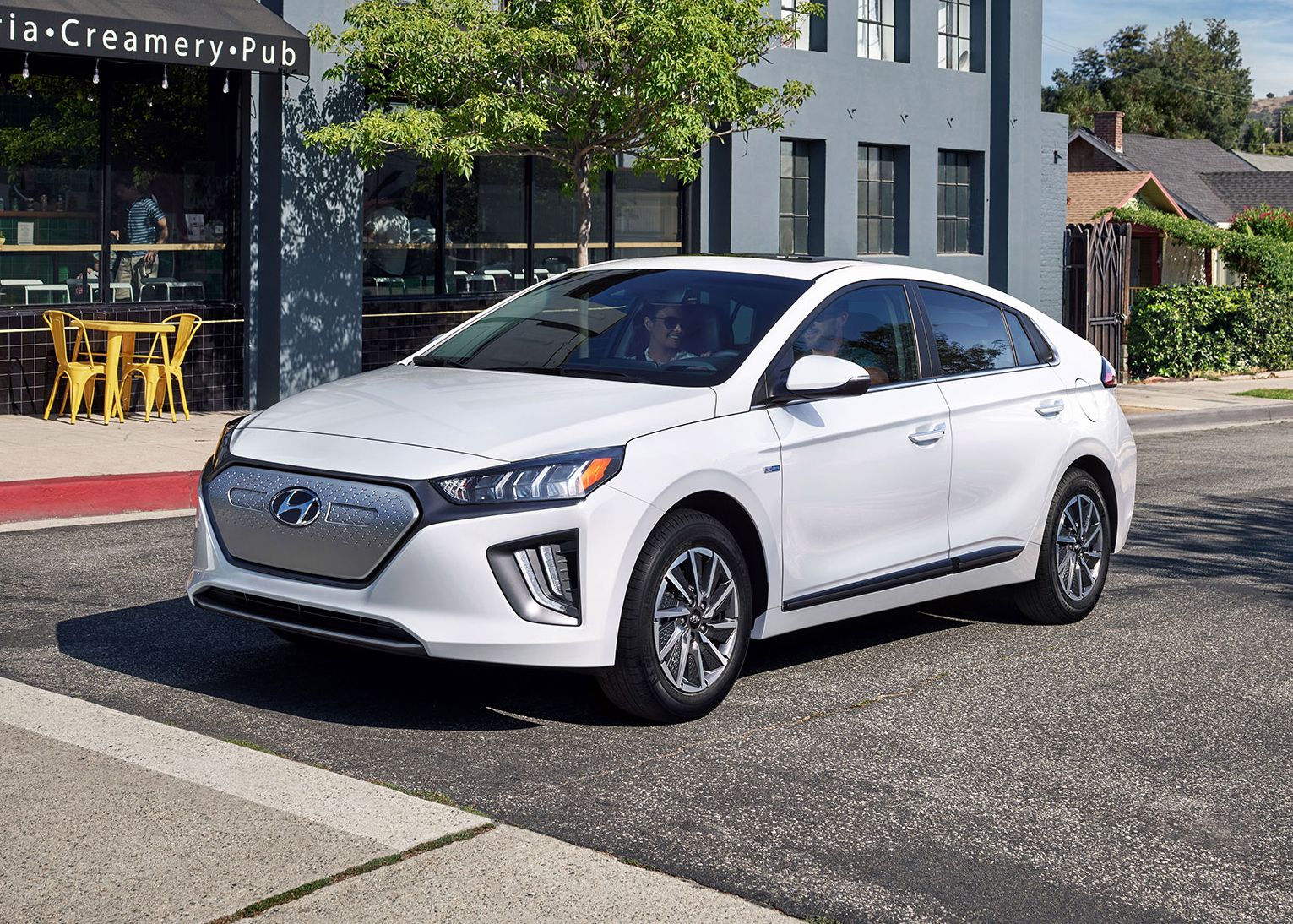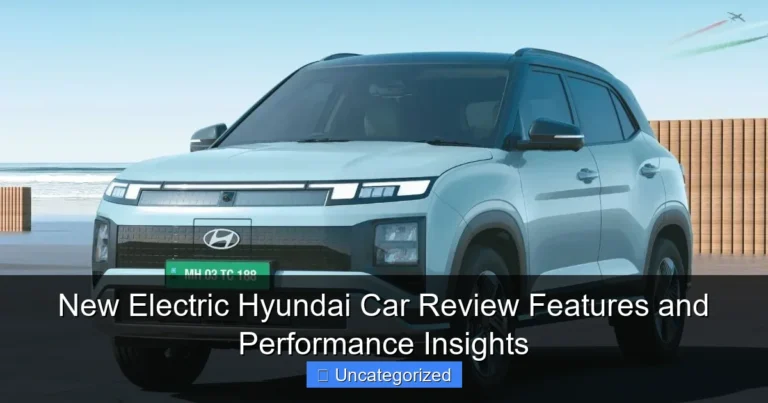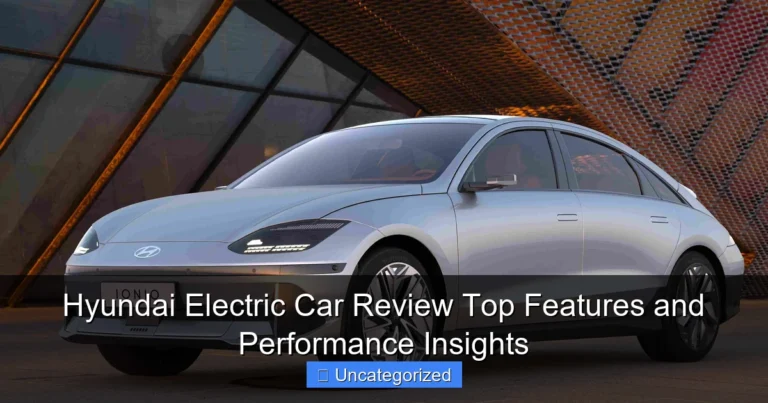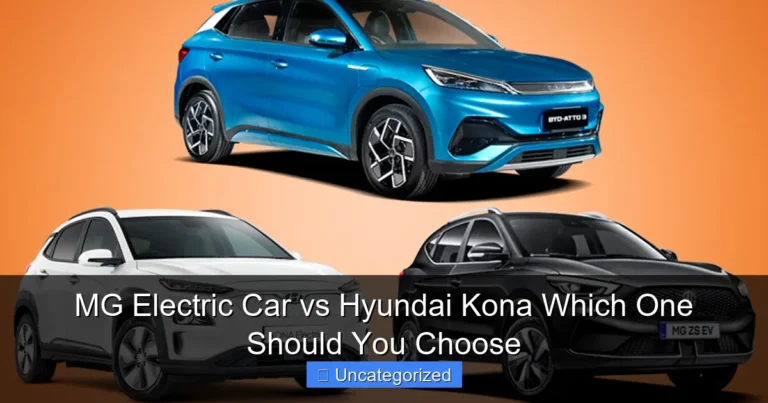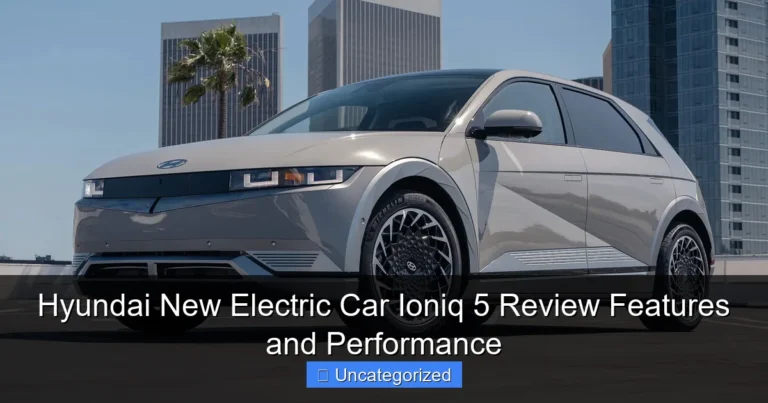Hyundai Ioniq EV: Revolutionizing Electric Mobility
If you’re in the market for an eco-friendly and efficient electric vehicle (EV), the Hyundai Ioniq EV is a top contender. Combining sleek design, advanced technology, and impressive range, the Ioniq EV is a popular choice for environmentally conscious drivers. In this comprehensive guide, we’ll explore everything you need to know about the Hyundai Ioniq EV, from its features and performance to its charging capabilities and sustainability benefits.
Key Features of the Hyundai Ioniq EV
The Hyundai Ioniq EV boasts a range of features that set it apart from other electric vehicles on the market. Here are some of the key highlights:
| Feature | Description |
|---|---|
| Efficient Electric Motor | The Ioniq EV is powered by a high-efficiency electric motor that delivers instant torque and a smooth driving experience. |
| Impressive Range | With a range of over 170 miles on a single charge, the Ioniq EV is perfect for daily commutes and weekend adventures. |
| Fast Charging Capability | The Ioniq EV supports fast charging, allowing you to recharge the battery to 80% in just 54 minutes using a DC fast charger. |
| Smart Connectivity | Stay connected on the go with features like Apple CarPlay, Android Auto, and Hyundai’s Blue Link telematics system. |
Performance and Driving Experience
Behind the wheel, the Hyundai Ioniq EV delivers a responsive and engaging driving experience. The electric motor provides instant acceleration, making city driving a breeze. The regenerative braking system helps to maximize efficiency by capturing energy during deceleration and braking, extending the vehicle’s range.
Acceleration: The Ioniq EV provided instant torque from the electric motor, allowing for decent acceleration. It could go from 0-60 mph in about 8.9 seconds.
Top Speed: The top speed of the Ioniq Electric was approximately 103 mph (165 km/h).
Driving Modes
The Ioniq EV offers multiple driving modes to suit your preferences and driving conditions. Choose between Eco, Normal, Sport, and Eco+ modes to optimize performance, range, or comfort, depending on your needs.
The Hyundai Ioniq is a line of electric and hybrid vehicles produced by Hyundai Motor Company. Introduced in 2016, the Ioniq series has become a significant part of Hyundai’s push toward sustainable and eco-friendly transportation. The Ioniq name is a combination of “ion,” reflecting the car’s electrification, and “unique,” highlighting its distinct place in Hyundai’s lineup.
Key Models in the Hyundai Ioniq Series
1. Hyundai Ioniq (2016-2022)
The original Hyundai Ioniq debuted in 2016 as the first car globally to offer three different electrified powertrains in one body style:
- Ioniq Hybrid: A parallel hybrid using a combination of an internal combustion engine (ICE) and an electric motor.
- Ioniq Plug-in Hybrid (PHEV): A hybrid model with a larger battery that can be plugged in for extended electric-only driving.
- Ioniq Electric: A fully electric variant without a gasoline engine, powered exclusively by a battery and electric motor.
These models were aimed at competing with other hybrid and electric vehicles such as the Toyota Prius and the Nissan Leaf.
Specifications of Original Ioniq Models:
- Ioniq Hybrid:
- Powered by a 1.6-liter gasoline engine and a 32 kW electric motor.
- Battery capacity: 1.56 kWh lithium-ion polymer.
- Combined fuel economy: 58 mpg (EPA rating), making it one of the most fuel-efficient cars at launch.
- Ioniq Plug-in Hybrid:
- Features the same 1.6-liter engine but with a larger 8.9 kWh battery.
- Electric range: Around 29 miles (47 km) before the gasoline engine kicks in.
- Ioniq Electric:
- Early versions had a 28 kWh battery with an estimated range of about 124 miles (200 km).
- A later upgrade included a 38.3 kWh battery, increasing the range to approximately 170 miles (274 km).
2. Hyundai Ioniq 5 (2021-Present)
In 2021, Hyundai launched the Ioniq 5, which marked the beginning of a new era for the Ioniq line as a standalone sub-brand focused on electric vehicles (EVs). The Ioniq 5 is a fully electric crossover SUV based on Hyundai’s Electric Global Modular Platform (E-GMP).
Key Features:
- Battery Options: 58 kWh or 77.4 kWh, with ranges varying between 220 miles (354 km) to 303 miles (488 km) depending on configuration.
- Charging: Ultra-fast charging capability using an 800V architecture, allowing 10-80% charge in about 18 minutes at a 350 kW DC fast charger.
- Performance: Available in both rear-wheel-drive (RWD) and all-wheel-drive (AWD) variants, with power outputs ranging from 168 to 320 horsepower.
- Design: A striking, futuristic design inspired by Hyundai’s heritage, including retro elements reminiscent of the 1970s Hyundai Pony but with a modern twist.
The Ioniq 5 has been praised for its spacious interior, advanced tech features, and innovative design, making it a strong competitor in the EV market against cars like the Tesla Model Y and Ford Mustang Mach-E.
3. Hyundai Ioniq 6 (2022-Present)
Following the Ioniq 5, Hyundai introduced the Ioniq 6, an electric sedan designed with a sleek, aerodynamic shape that Hyundai calls an “Electrified Streamliner.”
Key Features:
- Battery: Utilizes the same 58 kWh or 77.4 kWh battery options as the Ioniq 5, offering up to 379 miles (610 km) of range (WLTP estimate) for the long-range model.
- Performance: Available in both single-motor RWD and dual-motor AWD setups, with power outputs up to 320 horsepower.
- Design and Aerodynamics: The Ioniq 6 features a drag coefficient of just 0.21, making it one of the most aerodynamically efficient vehicles on the market.
4. Hyundai Ioniq 7 (Future Model)
The Ioniq 7, expected to debut in 2024, will be a large, fully electric SUV designed for families. It will also be based on Hyundai’s E-GMP platform and is expected to feature similar ultra-fast charging capabilities, a long-range battery, and cutting-edge technology like autonomous driving features.
Hyundai Ioniq Sub-Brand
In 2020, Hyundai announced that Ioniq would become a dedicated sub-brand for electric vehicles, under which all of their future EVs would be launched. This was part of Hyundai’s larger strategy to become a global leader in electric mobility. As part of this initiative:
- Ioniq 5 was the first model under this new electric-focused brand.
- Ioniq 6 and Ioniq 7 are part of the expansion.
- Hyundai aims to offer a range of EVs under the Ioniq name, covering sedans, SUVs, and potentially other types of vehicles.
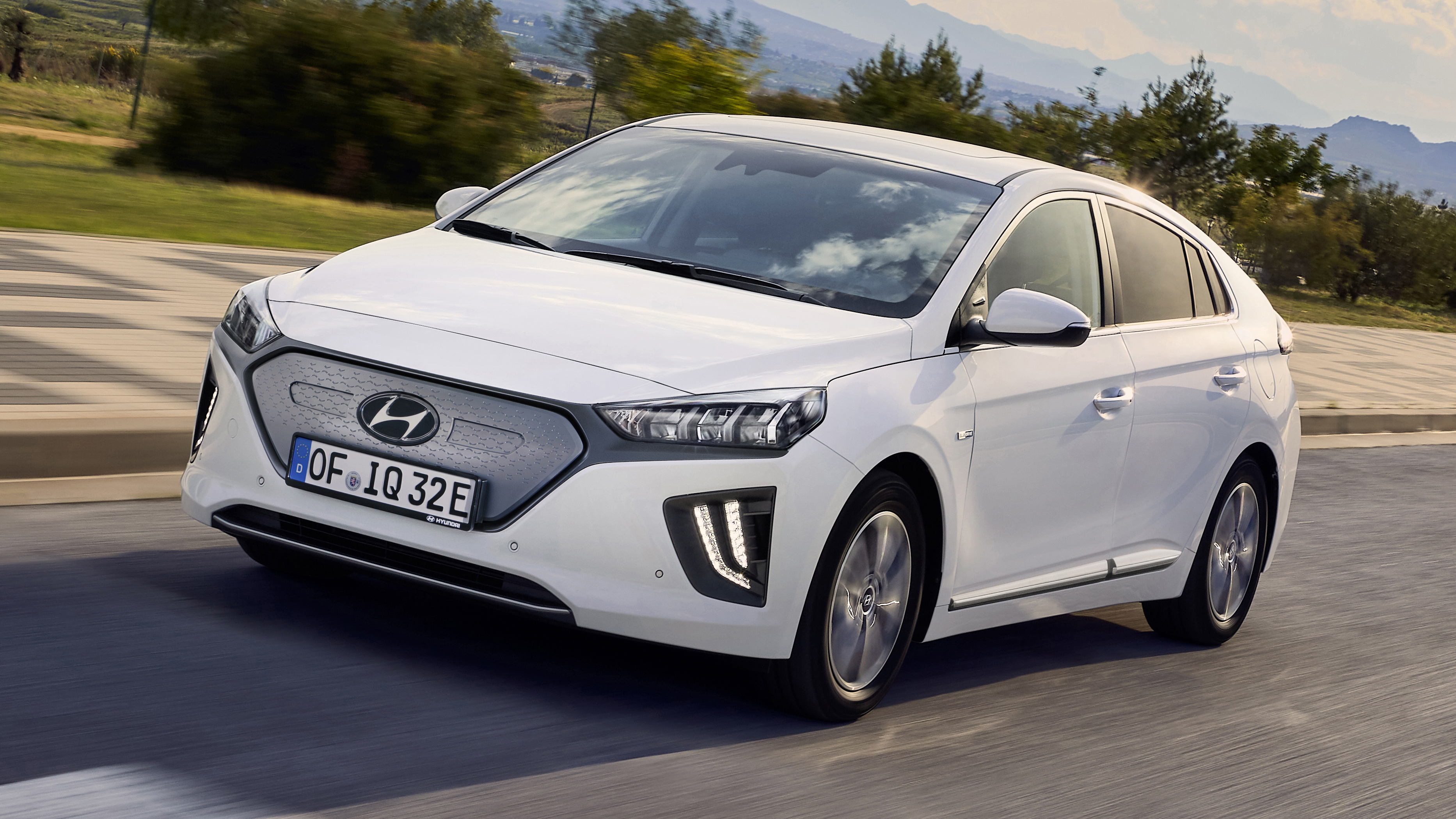
Charging the Hyundai Ioniq EV
Charging an electric vehicle is a crucial aspect of ownership, and the Hyundai Ioniq EV makes it easy and convenient. You can charge the Ioniq EV at home using a standard household outlet or opt for a faster Level 2 charger for quicker charging times. Additionally, the Ioniq EV is compatible with DC fast chargers, allowing you to top up the battery on the go at public charging stations.
Charging Times
When using a Level 2 charger, the Hyundai Ioniq EV can be fully charged in approximately 6 hours. With a DC fast charger, you can achieve an 80% charge in just under an hour, making it ideal for long-distance travel and quick pit stops.
Charging Capabilities
- AC Charging: The Ioniq EV supported Level 2 charging (240V) with a 7.2 kW onboard charger, allowing a full charge in about 6 hours with a compatible home or public charger.
- DC Fast Charging: The vehicle also supported DC fast charging using the CCS (Combined Charging System). With a 100 kW fast charger, the Ioniq EV could charge up to 80% in approximately 54 minutes for the 28 kWh version and around 45 minutes for the 38.3 kWh version.
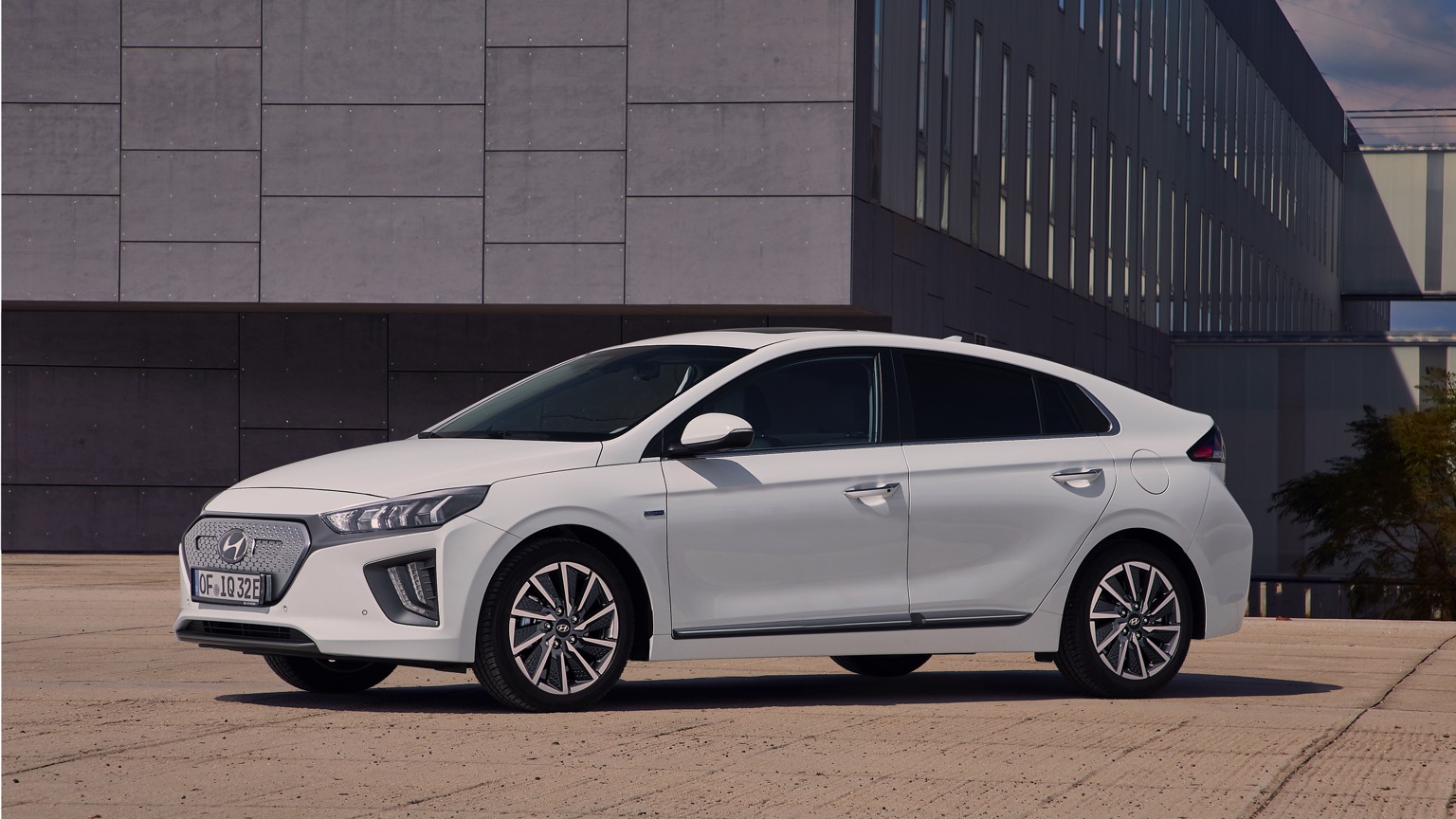
Sustainability and Eco-Friendly Design
Hyundai is committed to sustainability and reducing its environmental impact, and the Ioniq EV reflects this ethos. The vehicle’s eco-friendly design incorporates recycled materials, energy-efficient components, and a focus on reducing emissions throughout its lifecycle.
Recycled Materials
The interior of the Hyundai Ioniq EV features materials made from recycled plastics, bio-fabrics, and eco-friendly alternatives, reducing the vehicle’s carbon footprint and environmental impact.
Energy Efficiency
From the electric motor to the battery management system, every component of the Ioniq EV is designed for maximum energy efficiency, ensuring that you get the most out of every charge and minimizing waste..
The Ioniq EV shared its exterior and interior design with the other Ioniq models (Hybrid and Plug-in Hybrid), featuring a sleek, aerodynamic hatchback body style that was functional and easy on the eyes.
- Exterior: The Ioniq EV had a closed front grille (since electric vehicles don’t require a large grille for engine cooling), helping it achieve better aerodynamics. Its smooth, flowing lines were designed to minimize drag and improve efficiency.
- Interior:
- The cabin was modern and featured eco-friendly materials, including recycled plastics and bio-fabrics.
- It offered a 7-inch digital instrument cluster and an 8-inch infotainment system (upgraded to a 10.25-inch screen in later models) with Apple CarPlay and Android Auto compatibility.
- Cargo Space: With the hatchback design, the Ioniq Electric offered 23.8 cubic feet of cargo space behind the rear seats, making it practical for everyday use.
Safety Features
The Ioniq EV was equipped with a suite of safety and driver-assist features, including:
- Forward Collision-Avoidance Assist (automatic emergency braking).
- Lane Keeping Assist.
- Blind-Spot Monitoring.
- Adaptive Cruise Control.
The vehicle earned favorable safety ratings, including the IIHS Top Safety Pick in some years.
Hyundai Ioniq vs. Competitors
The Ioniq models, particularly the Ioniq 5 and 6, are positioned to compete with top EV brands like Tesla, Rivian, Volkswagen’s ID.4, and Ford’s Mustang Mach-E. Hyundai’s emphasis on design, cutting-edge tech, and charging speed gives it a competitive edge in the fast-growing electric vehicle market.
During its production, the Ioniq EV competed with several electric vehicles in the market:
- Nissan Leaf: One of the earliest and most popular mainstream electric vehicles.
- Chevrolet Bolt EV: Offering a longer range but at a higher price point.
- Volkswagen e-Golf: Another compact electric car with similar range and price.
Discontinuation and the Ioniq Sub-Brand Transition
The Hyundai Ioniq EV was discontinued after the 2022 model year as Hyundai shifted its focus to the Ioniq sub-brand dedicated entirely to electric vehicles. This shift led to the introduction of new models like the Ioniq 5 (a fully electric crossover SUV) and Ioniq 6 (an electric sedan). These newer models use the E-GMP (Electric Global Modular Platform), which allows for improved performance, higher ranges, and faster charging capabilities compared to the original Ioniq EV.
Frequently Asked Questions
What Is The Range Of Hyundai Ioniq Ev?
The Hyundai Ioniq EV offers a range of up to 170 miles on a full charge.
How Long Does It Take To Charge?
Charging the Hyundai Ioniq EV to 80% takes approximately 54 minutes using a 100 kW DC fast charger.
Does Hyundai Ioniq Ev Have Regenerative Braking?
Yes, the Hyundai Ioniq EV comes with adjustable regenerative braking to enhance energy efficiency.
What Safety Features Does Ioniq Ev Have?
The Hyundai Ioniq EV is equipped with advanced safety features like lane-keeping assist and automatic emergency braking.
Conclusion
The Hyundai Ioniq EV offers a compelling combination of performance, efficiency, and sustainability, making it an attractive option for eco-conscious drivers. With its impressive range, fast charging capabilities, and smart features, the Ioniq EV is a versatile and practical electric vehicle that is perfect for everyday use. Whether you’re looking to reduce your carbon footprint or simply enjoy the benefits of electric driving, the Hyundai Ioniq EV is a top choice in the EV market.
